MARNE - The Retreat from Mons - 1914
Year of Visit: 2008
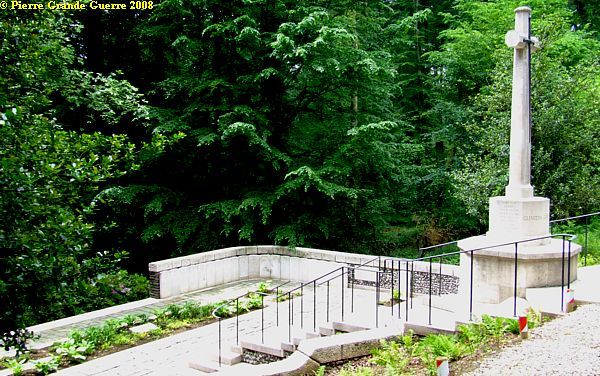
We visit some interesting Marne locations, Verberie, Néry, and Villers-Cotterêts, reminding us of the events some days before the start of the First Battle of the Marne (5-10 September 1914). We are focusing on 3 sites in France which played an important role during the Retreat from Mons, Belgium, from 24 August to 2 September 1914.
On the next page we will visit battlefields, memorials, and cemeteries of the First Battle of the Marne
in the valley of the Ourq river .
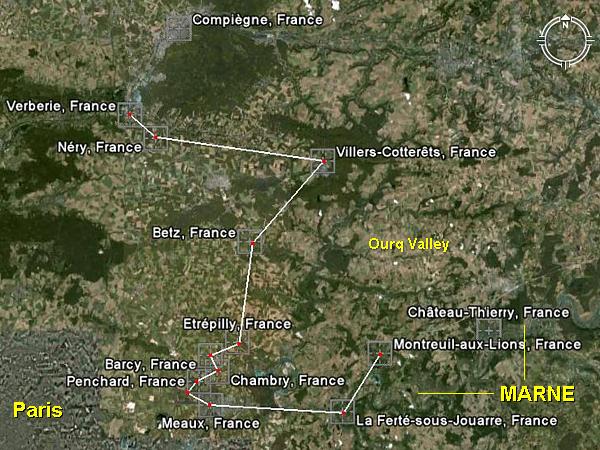
We start our trip at the Nécropole Nationale of Verberie .
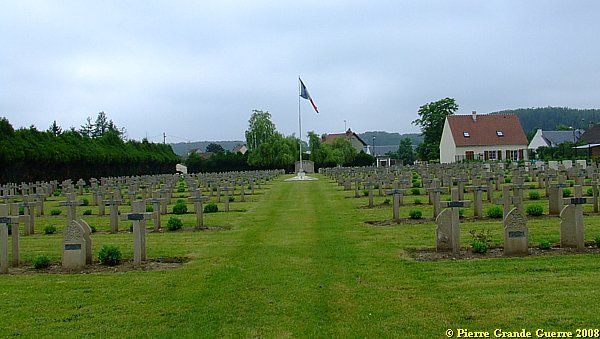
The Nécropole Nationale de Verberie contains 2.506 graves of French soldiers, fallen in this area during the summer of 1914, and also the graves of 53 British soldiers, killed during "The Retreat from Mons".
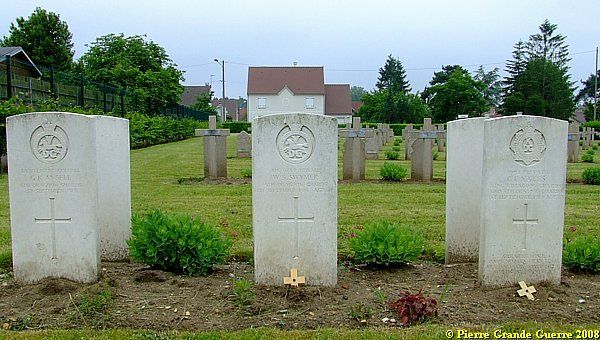

The Retreat from Mons - 24 August - 4 September 1914

Since 24 August 1914 the British Expeditionary Force (BEF), together with the French 5th and 6th Armies were in a fighting retreat from Belgium into France southward, the so-called "Retreat from Mons".
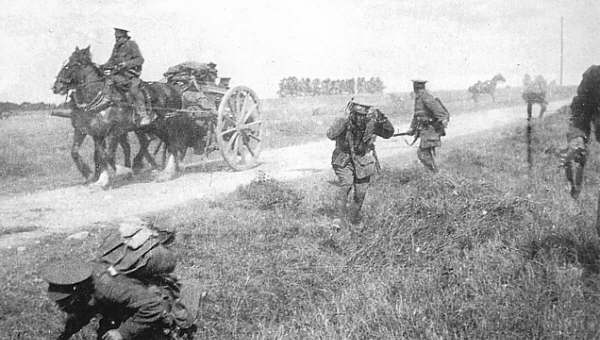
Von Moltke's 760.000 troops of the German 1st, 2nd, and 3rd Armies chased the 700.000 Allied troops in the direction of Paris, fighting battles with each other near Le Cateau, Guise, and St. Quentin (26 and 29 August 1914). Near Villers-Cotterêts the British 4th Guards Brigade checked the German advance on 1 September.
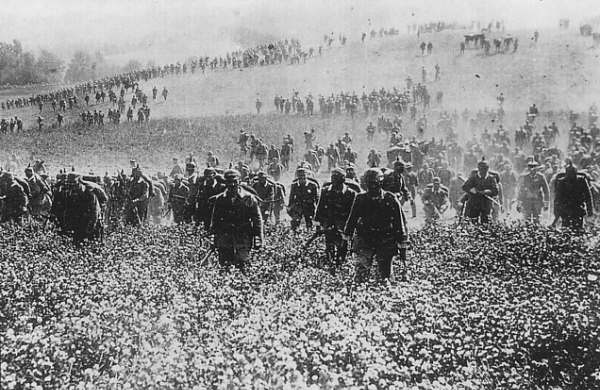
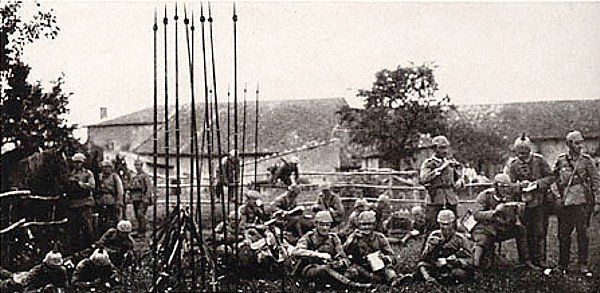
On 1 September General von Kluck’s 1st Army lost contact with his Supreme Commander von Moltke in Koblenz and General Von Bülow’s 2nd Army on his left wing.

Von Kluck decided to divert from the Von Schlieffen Plan, and he directed his troops to the east of Paris.
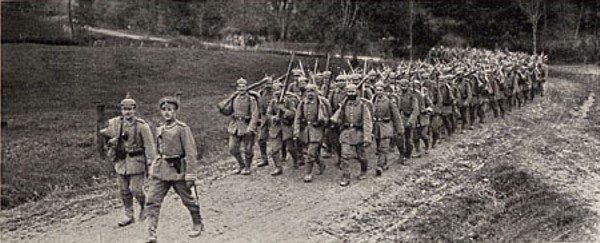
That day his troops were fighting the British Expeditionary Force near the Oise river, near Villers-Cotterêts, Verberie, and Néry.
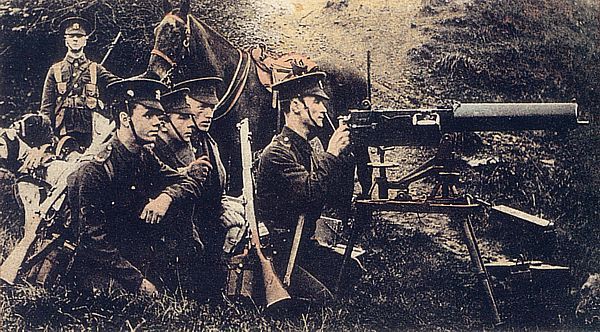
On 3 September the Germans reached and crossed the Marne at Château Thierry.
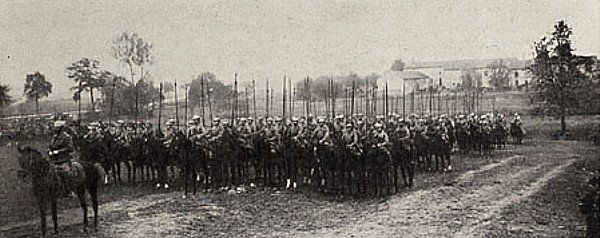
At dusk of 4 September, von Kluck’s 1st Army, still fighting with Manoury's 6th Army, had reached Meaux, only 13 kilometres of Paris, and amongst others, la Ferté sous Jouarre. On the hill of Monthyon, near Meaux, the Germans installed an observation post with machine guns and artillery guns, which could easily reach Paris. For the Allies Paris was in real danger and the war seemed about lost.
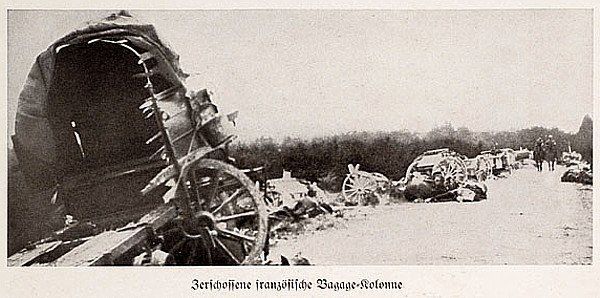
Five British graves are in a particular plot in the Verberie Cemetery.
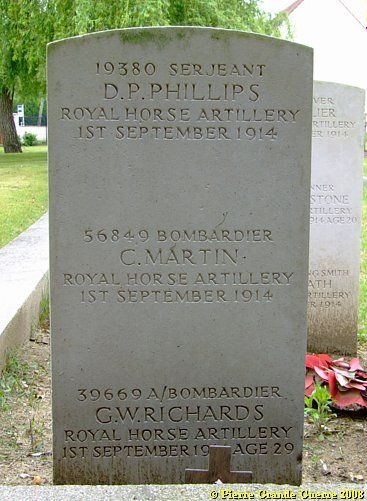
These are graves of soldiers of the Royal Horse Artillery, who died on 1 September 1914 at nearby Néry.
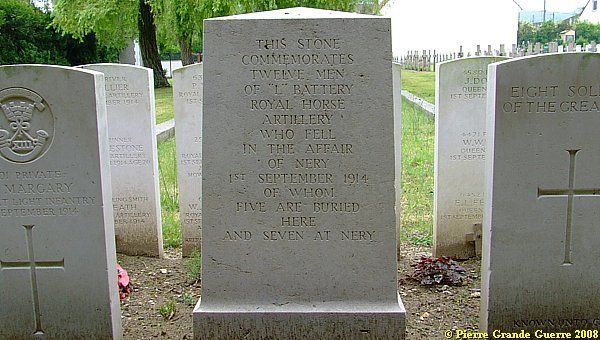

The Affair of Néry - 1 September 1914
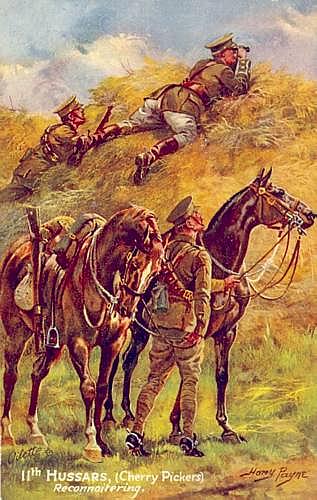
"L" Battery of the Royal Horse Artillery, followed in the wake of it’s 1st Cavalry Brigade to Néry. At the village of Néry were temporarily stationed the 5th Dragoon Guards, the 11th Hussars, and the Queen's Bays (2nd Dragoon Guards). "L" Battery took a position south east of the village to block two roads, which led east and south from the village.
On 1 September, shortly after 5.00 AM a high-explosive shell burst over the village, and gun and rifle fire broke out from the heights overlooking the eastern side of Néry.
At the same moment Lieutenant Tailby of the 11th Hussars, who had been sent with a patrol to reconnoitre the high ground north of Néry, reached the headquarters in the village, and reported that he had ridden into a body of German cavalry, and that he had been chased back. The 1st Cavalry Brigade had been taken completely by surprise.
More explosions followed. Apparently several German guns were in action on the heights to the east, some 750 m. away. The horses of the Bays stampeded under the German fire.
A shell bursted over the position of "L" battery, and immediately afterwards it came under heavy rifle fire from the ridge. Captain Bradbury shouted out: "Come on! Who's for the guns?". Followed by all the other officers, and joined by those men who were engaged in steadying the horses under bursting shells, the officers got three guns unlimbered and swung round to face the German guns. Hardly were the three guns in action, when one of them was knocked out by a direct hit. The other two guns fired only a few rounds, when the men of the second gun were either killed or wounded. This left only one gun, under Captain Bradbury, which was still in action.

Two surviving subalterns of the second gun joined Bradbury's detachment. The tasks at the gun became: Lieutenant Mundy acted as Section Commander, while Captain Bradbury worked as layer, and Sergeant Nelsonwas the range-setter. The German guns now fired together directly on "L" Battery.
At 07.15 hours casualties began to mount up. Captain Bradbury and the severely wounded Sergeant Nelson were the only ones left. They kept up firing at the best,they could. A reinforcement now reached the little detachment, in the person of Battery-Sergeant-Major Dorrel. On his arrival Captain Bradbury went back to fetch up more ammunition. As he left the gun, he was hit by a shell and mortally wounded. Now there remained only Dorrel and Nelson. These two fired the gun’s last remaining rounds.
At it’s last discharge, reinforcements of the Bays, 5th Dragoons, and 11th Hussars, reached the field and dismounted. Together with the recently arrived "I" Battery the Cavalry Brigade forced the German 4th Cavalry Division to withdraw into the surrounding forests, causing such heavy losses under the Germans, that the division was unable to fight until 4 September.
Captain
Bradbury, Sergeant Nelson, and Battery-Sergeant Major Dorrell were
awarded posthumously with the Victoria Cross.
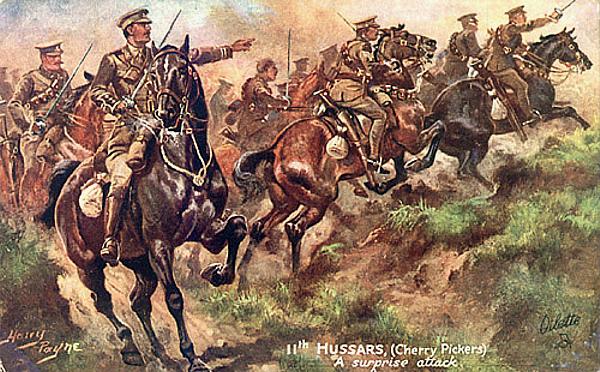
At Néry
we visit the former location of "L"-Battery with it's Memorial for the Royal Horse Artillery
.
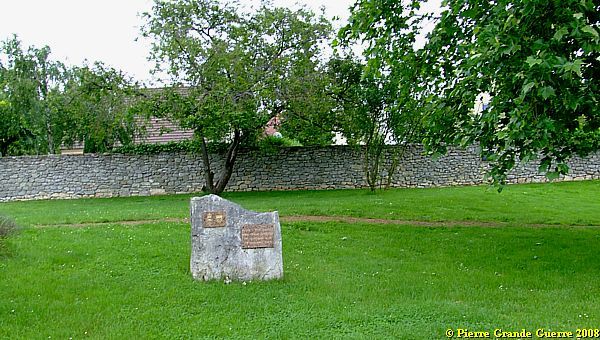
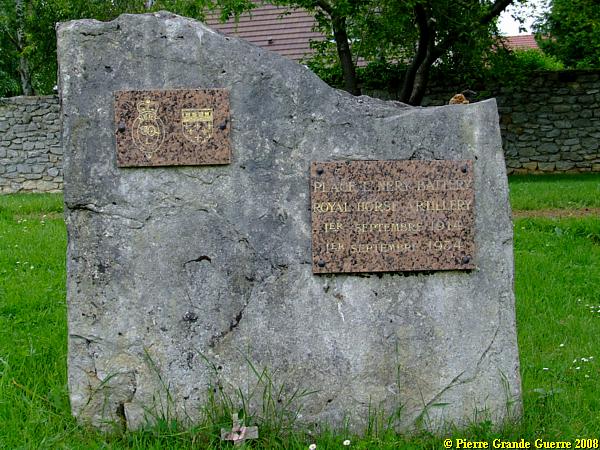
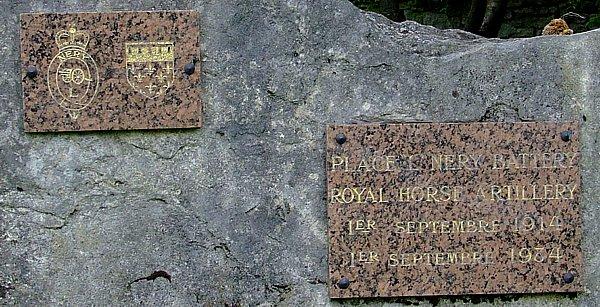
There is also a plaque commemorating the actions of the 2nd Dragoon Guards (Queen's Bays) against the German 4th Cavalry Division. - (The last line seems to me a rather disputable remark).
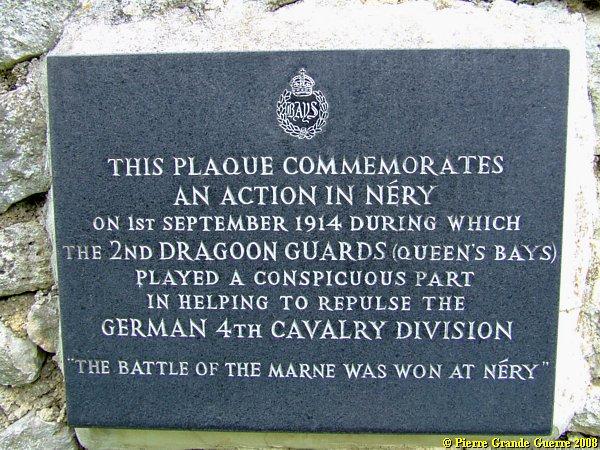
We continue in Néry to the local, civilian cemetery of Néry to visit the other graves of the 12 Royal Horse Artillery soldiers and officers of "L" Battery.
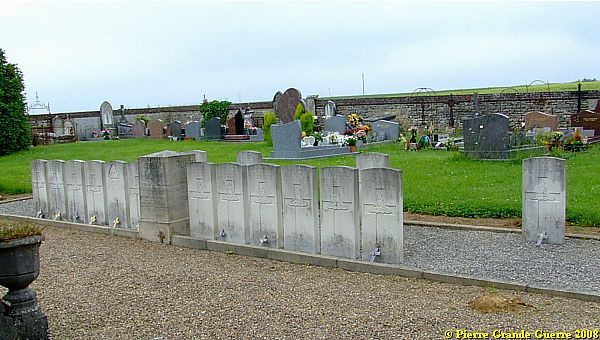
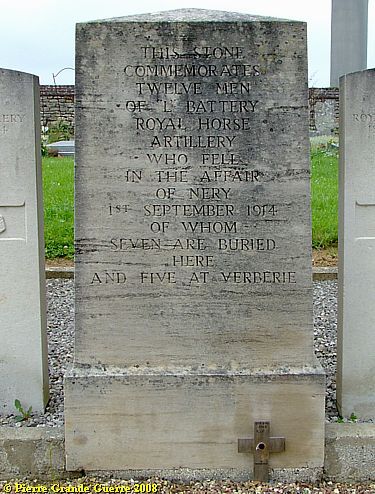
This remembrance stone is also referring to their brothers in arms, buried at Verberie.

In the Néry cemetery there is also a commemorative obelisque dedicated to 3 British officers, who died at Néry on 1 September.
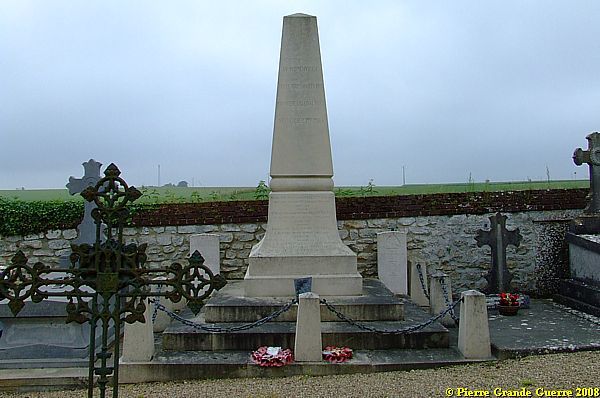
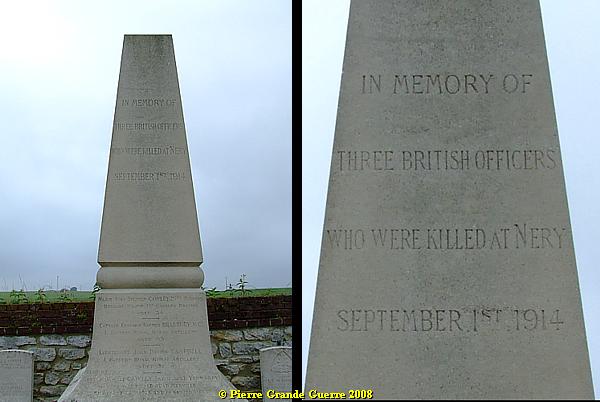
The 4th inscription at the base is for the brother of Major Cawley, Captain Oswald Cawley, fallen near Merville in 1918.

The graves for these officers surround the obelisque. Left: the grave of Major Cawley. On the right: on the grave of Captain Bradbury VC are also mentioned the 2 other officers of "L"- Battery, awarded with the Victoria Cross: Battery-Sergeant Major Dorrell and Sergeant Nelson.
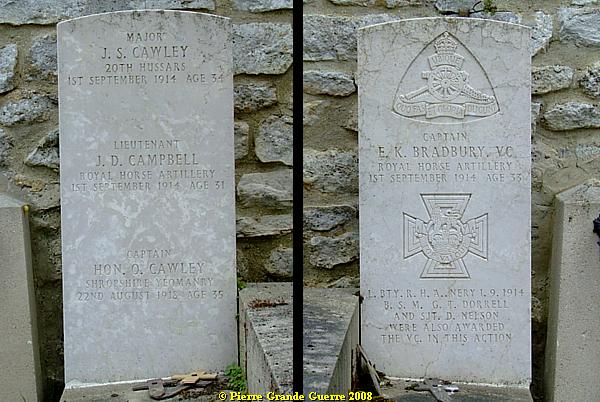
We continue to the Forêt de Retz , the Forest of Retz, near Villers-Cotterêts.
Rond de la Reine - Forêt de Retz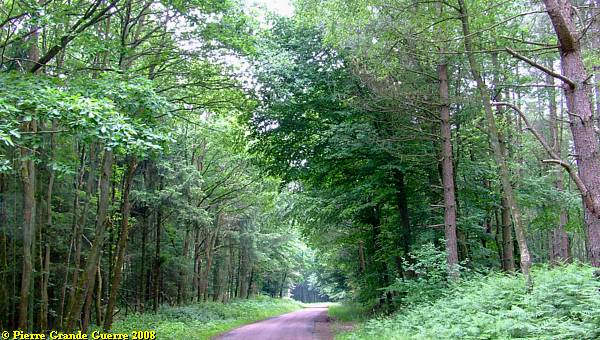
| On 1 September 1914 the three Rearguard Actions of Villers-Cotterêts were fought. In one of these actions the 4th (Guards) Brigade, covered the rear of the 2nd Division and the Irish Guards, the 2nd Grenadiers and the 3rd Coldstreams fought their way to Villers-Cotterêts with some loss. The main action began about the "Rond de la Reine", a clearing on the main road now marked by the Guards' Memorial. The Guards' Grave is just south-west of the memorial on the south-east side of the main road. |
Along a bend of the D 81 lies at a slope the Guards Grave .

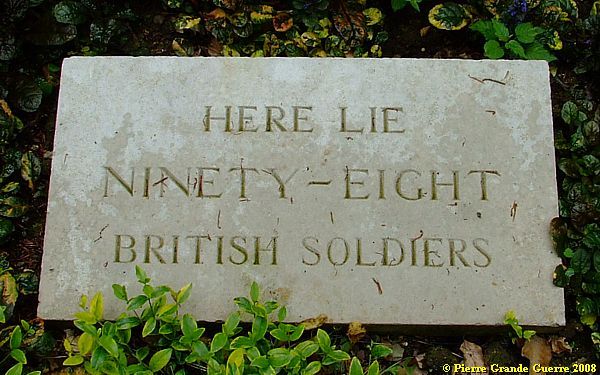
This small cemetery, the Guards Grave, contains a mass grave of 98 officers and soldiers of the Grenadier, Irish, Coldstream, and Life Guards, fallen in this forest during the period of 1-19 September 1914.
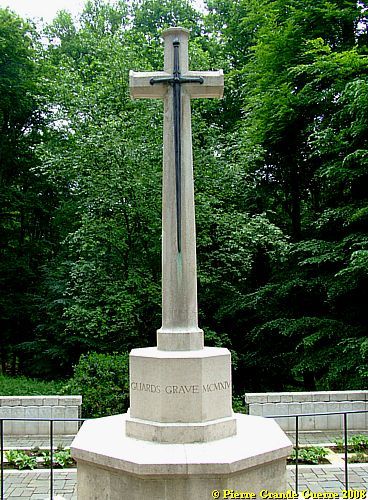

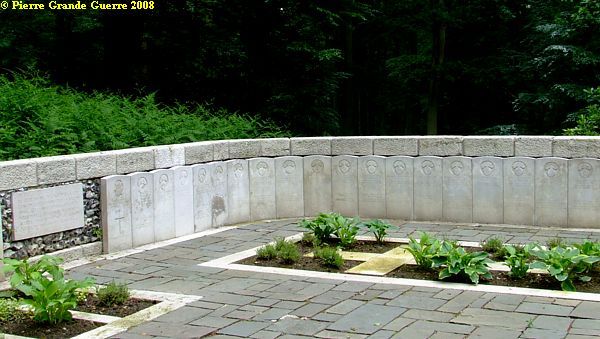
On 1 September Lt. Colonel Morris with 70 of his last men fought around here a desperate rearguard action under
machine gun fire and rifle fire from encircling German troops.
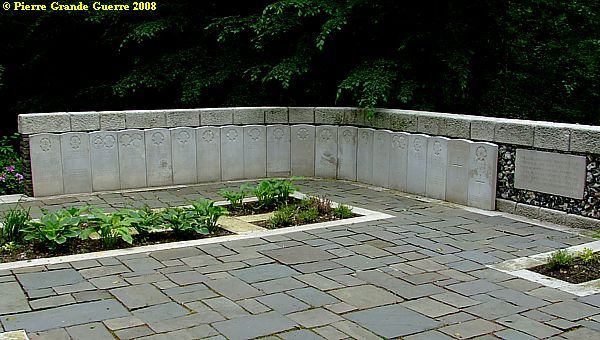
Four headstones of officers, fallen on 1 September: 2nd. Lt. Cecil (Grenadiers), Lt. Lambton (Coldstream), Major Tisdall (Irish), and on the right: ...
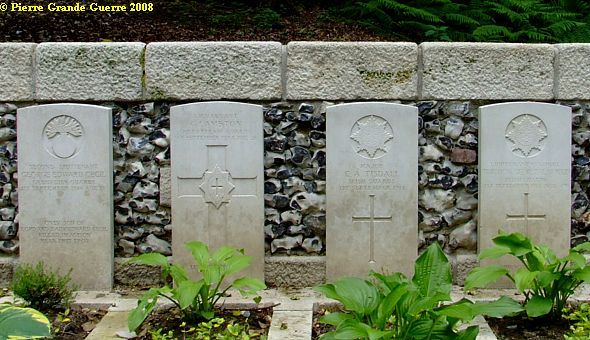
... the tombstone for Lt. Colonel George Morris.
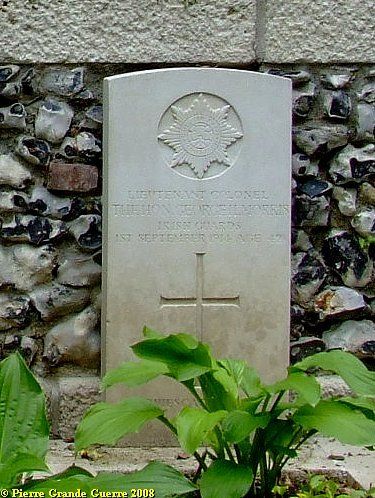
Some 10 days later, during the First Battle of the Marne, more Guards died here in the Forest of Retz during the fights of 11 September.
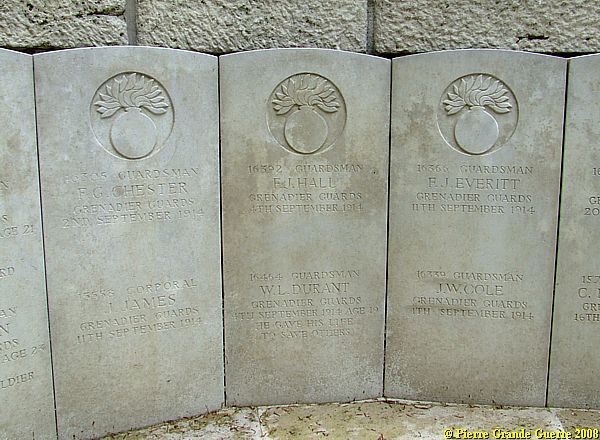
Some 200 m. furtheron is the location, where the main action began: at a junction at the clearance, Rond de la Reine , stands a private memorial for 2nd. Lt. Cecil, the Guards Memorial :
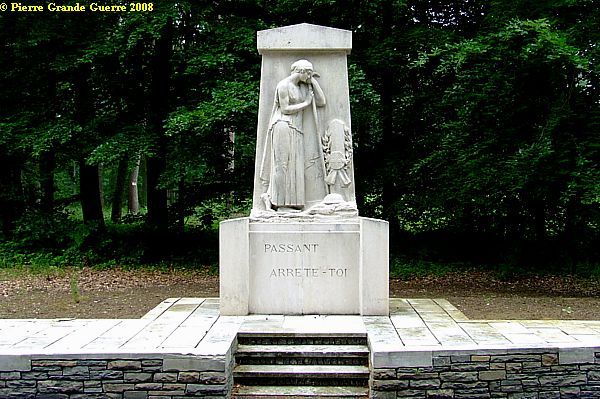
An inscription on the rear side tells us: " In honour of the officers and men of the Grenadier, Coldstream, and Irish Guards, who fell near this spot on 1 September 1914. "
We continue to the left hand side of the Paris/Compiègne road from the centre of the town of Villers-Cotterêts to the northern outskirts of the town.
Here we visit the Cimétière Militaire de Villers-Cotterêts , or the Villers-Cotterêts French National Cemetery.
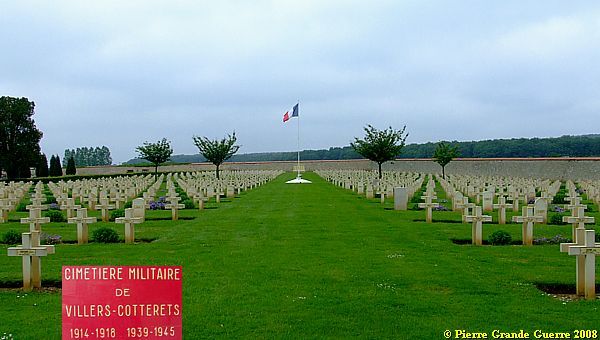
The Cimétière Militaire de Villers-Cotterêts
contains 3.411 French burials of
which 933 in two ossuaries, 4 Russian graves, and 4 British
graves. There are graves from
both periods of the Marne battles of 1914 and of 1918.

The memorial above the 2 ossuaries.

Grenadier Guardsman, J. Heslin, who died on 14 September 1914, is also buried in the ossuary.
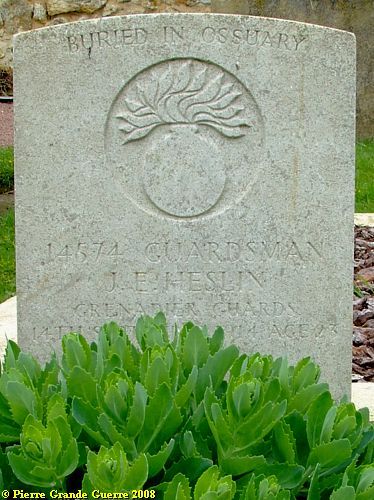
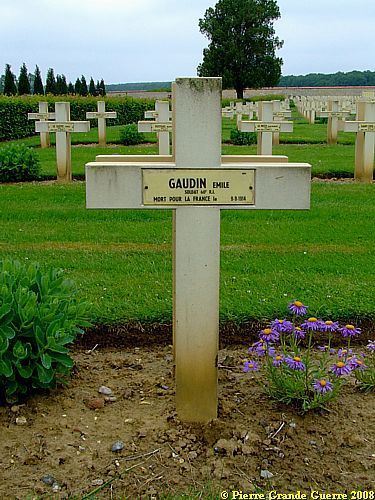
These are "1918" graves. The right grave is of the Canadian Private R.L. Bradley, killed on 25 March 1918.
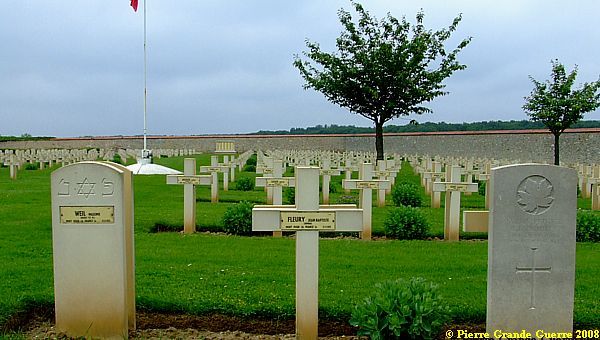
There is also a large plot for French Colonial Muslim soldiers.
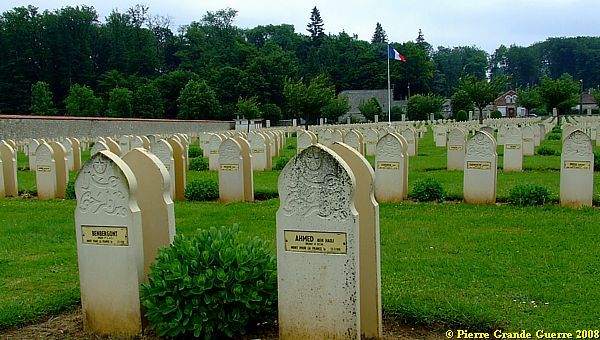
From Villers-Cotterêts we continue to Betz to visit locations of the First Battle of the Marne.
Continue to: " The First Battle of the Marne - 1914 "










